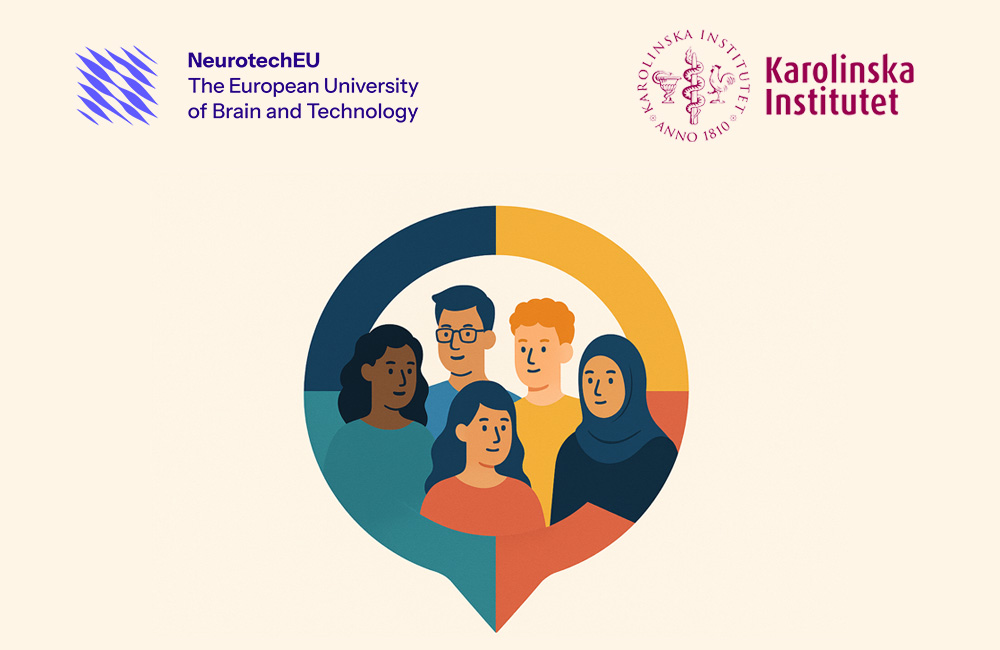Diversity, Equity and Inclusion (DEI) in Higher Education
This toolkit was developed by ;Neurotech EU - The European University of Brain and Technology and reflects the network's engagement and commitment to the topic of DEI in higher education.
The aim of this training material is to provide an opportunity to consider how aspects related to Diversity, Equity and Inclusion (DEI) are related to one's role within a higher education context - whether it be as a student, educator or support staff, both within the Neurotech EU network but also far beyond it. This toolkit is designed to support the continuous development and implementation of DEI practices by providing a space for reflection and inspiring with promising practices and potential tools for further action.

Important Notice
This course is available though Canvas Catalog. Please create the user account and enroll by following the link below.
Questions or comments?
This toolkit was developed by the NeurotechEU working group on Diversity, Equity and Inclusion (DEI), part of the focus of Work Package 3: Empowering Learners and Staff. If you have any comments or questions please contact Karolinska Institute (KI) Educational Developer Natalie Jellinek at natalie.jellinek@ki.se
We estimate that it will take around 6 hours to complete the toolkit, assuming that you complete all the exercises. However, you are welcome to dip in and out of the modules when you have time.
Read more about this, the learning objectives and how to navigate materials on the Toolkit User Guide: Toolkit design and learning outcomes.
Lessons
Number of lessons: 7-
NeurotechEU team
Let's embark on Module 1, as we delve into the concepts of Diversity, Equity and Inclusion (DEI), especially as they relate to the world of higher education.
Once you have completed this module you should be able to:
- …
-
NeurotechEU team
Let's embark on Module 2, as we delve into some key concepts related to Diversity, Equity and Inclusion (DEI). These concepts include intersectionality, power and privilege and unconscious bias.
Once you have completed this…
-
NeurotechEU team
Let's embark on Module 3, which focuses on harassment and discrimination and strategies for prevention at the university.
Once you have completed this module you should be able to:
- Define the…
-
NeurotechEU team
Let's embark on Module 4, which focus on turning the awareness about DEI into action. This toolkit focuses on the role of students, educators and support staff when it comes to integrating DEI perspectives into their roles.
…
-
NeurotechEU team
Module 5 is a repository of additional materials, resources and useful links to consider when it comes to DEI in higher education. Feel free to browse and suggestion additional resources should you have any.
-
NeurotechEU team
Module 6 provides a glossary of key terms related to the area of Diversity, Equity and Inclusion (DEI). The list is not exhaustive and is focused on terms relevant to higher education as well as teaching and learning aspects. It is intended…
-
NeurotechEU team
Module 7 invites you to consider the context in which DEI and related work takes shape by presenting the various ways in which the different NeurotechEU partners work with and for these issues.
Once you have completed this module…



